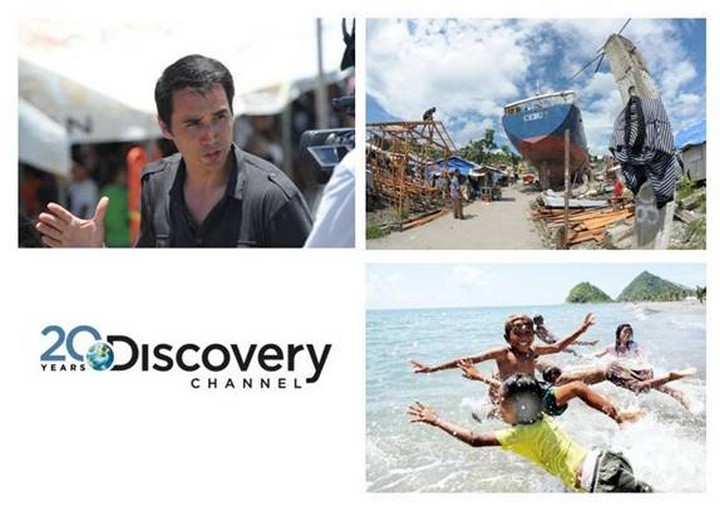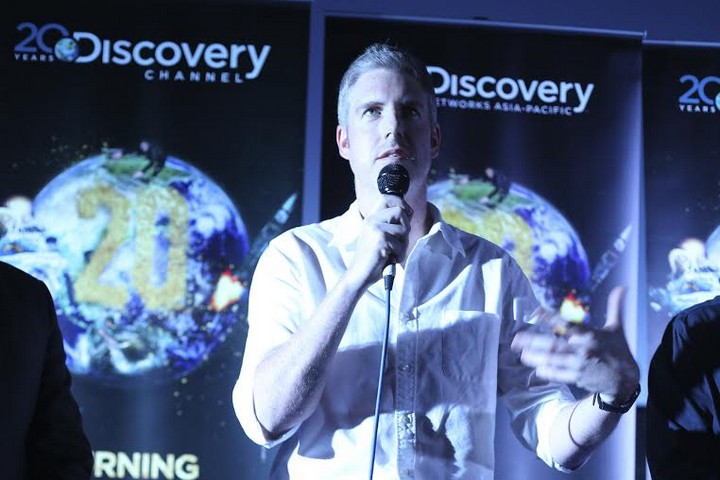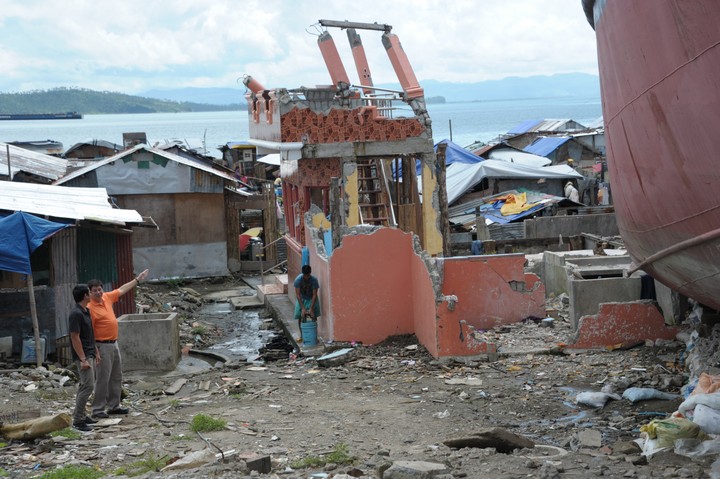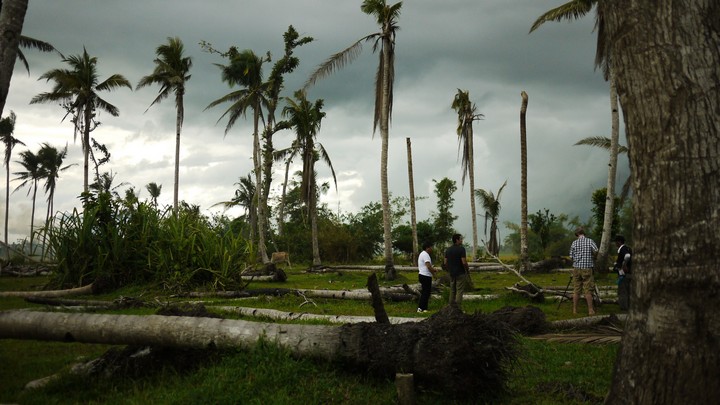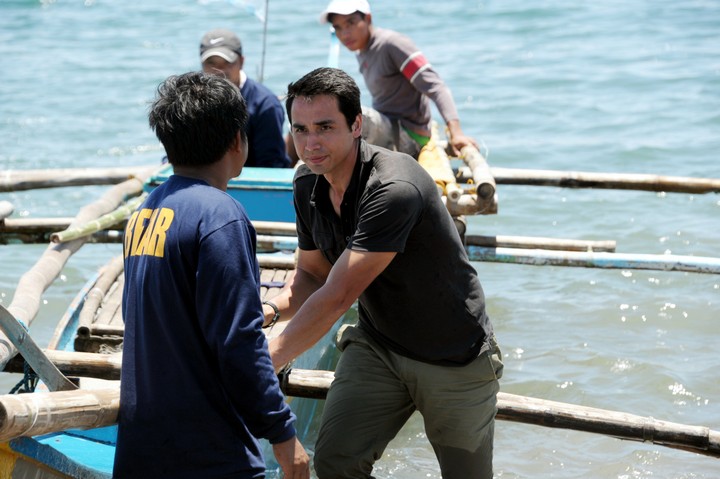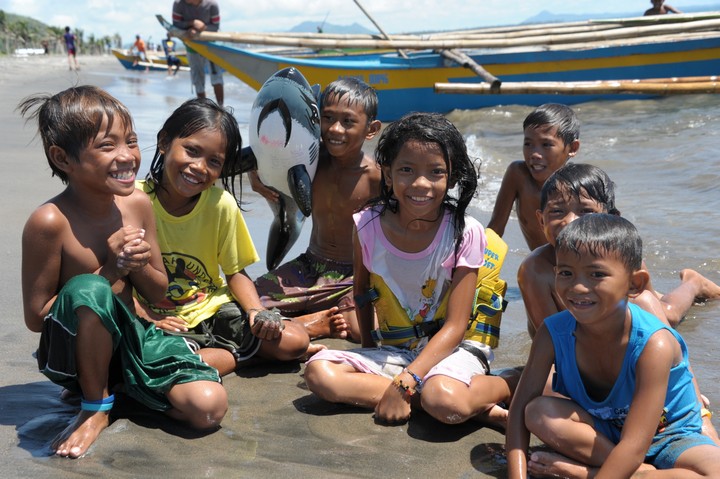Dateline Tacloban: A Year after Super Typhoon Haiyan (Yolanda)
For the over 12 million affected and 4 million Filipinos displaced by typhoon Haiyan (local name: Yolanda), November 8 will never be an ordinary date ever again. 1 year ago, on that fateful day, their lives turned upside down. Many families lost loved ones, and there were even families that died all together. Houses, properties, livestock and even pets were swept away by the storm surge. Dreams and hopes shattered. And for yet many, even their faith was tested. But the rebuilding of lives continues…
Discovery Channel’s one-hour documentary HAIYAN: AFTER THE MEGASTORM, aired one year after the tragedy and took stock of what has happened since November 8, 2013 when Haiyan ravaged Tacloban. Hosted by Filipino-British television presenter and actor Trey Farley, the Haiyan special premiered in the Philippines and across Southeast Asia on Saturday, November 8 at 8:00 p.m. on Discovery Channel with replays on Sunday, November 9 at 10:00 a.m., 6:00 p.m., and 10:00 p.m.
HAIYAN: AFTER THE MEGASTORM was executive produced by Emile Guertin for Discovery Channel
The Discovery Channel team led by executive producer Emile Guertin shot HAIYAN: AFTER THE MEGASTORM documentary in Tacloban during the last week of April until the first week of May. They were hosted by none other than Tacloban Mayor Alfred Romualdez himself. Trey Farley talked to residents, business owners, stranded crew of tanker ship, farmers, fishermen, and children— Haiyan survivors all of them. Not a few of whom still find it hard to recount the tragedy that hit them a year ago.
It was in the early morning of November 8, 2013, when typhoon Haiyan surged through central Philippines (with Leyte and Samar as the most affected places). It wreaked havoc across the country. It caused widespread devastation on its path and a staggering death toll. Up until this week, there are still bodies being found. The sheer magnitude of the super storm was unprecedented, and the scale of damage it left in its wake was shocking.
Haiyan literally flattened communities and cities in its wake. The recovery and rebuilding are far from finished. The slow pace has, in fact, became the center of complaints and controversies. In phone conference with bloggers, Discovery Channel’s Emile Guertin cited that they did notice that the recovery process is “taking a lot longer than expected”.
Tacloban, as can be seen in the documentary, still bears the indelible scars of Haiyan’s destructive path with evidence of it everywhere; the Daniel Z. Romualdez airport has only been partially rebuilt, and much of the city is still on the road to recovery. HAIYAN: AFTER THE MEGASTORM went behind the scenes to gain unique insight into the situation.
Tacloban Mayor Alfred Romualdez himself took Trey Farley around to take stock of the rebuilding efforts.
Trey Farley and Tacloban Mayor Alfred Romualdez boarded a grounded cargo ship that remains manned by the stranded crew to this day, and visited a temporary burial site where thousands of bodies had to be identified before being exhumed for placement in permanent graves later on. Trey also stops at a school that remains eerily frozen in time after being completely gutted by the typhoon’s storm surge, which was fuelled by winds that reached an average of 195 mph (310 kmph).
Focus was also given on farmers and fisherfolks in Tacloban, as agriculture was the most affected sector in Tacloban (the whole Eastern Visayas, for that matter). Department of Agriculture Secretary Proceso Alcala was also part of the documentary, as he discussed the efforts being made in helping farmers, particularly coconut farmers, cope and recover from their losses.
Trey Farley and Agriculture Secretary Alcala looked closely on the plight of the coconut farmers as well as in the clearing and cutting down of the felled trees. A total of 33 million coconut trees destroyed in Haiyan-ravaged areas, around seven million of them in Tacloban.
It was reported that there were a total of 33 million coconut trees destroyed in Haiyan-ravaged areas, around seven million of them in Tacloban. It takes between six to eight years for a coconut to grow and become productive again. Thus coconut farmers were taught to do inter-cropping, they planted sweet potatoes alongside coconut trees to have sustainable and continuing income.
Trey Farley and Agriculture Secretary Alcala looked closely into the plight of the coconut farmers as well as in the clearing and cutting down of the felled trees. The coconut trees have to be cut down because the dead trees will cause infestation and attract pests that can make the soil infertile. The trunks were turned into coco lumber.
The fisherfolks, on the other hand, were provided with new boats, while many repaired old ones or built from scratch—which takes at least three days. Trey Farley joined a group of fishermen who set out to sea.
Filipino-British Trey Farley, who speaks conversational Filipino, relates to the plight of Haiyan survivors, including fisherfolks.
Choosing Trey Farley as the host of the documentary, according to Emile Guertin, adds empathy to the storytelling. The Filipino-British host, who is conversant in Filipino, did manage to create rapport with Tacloban residents. He mentioned at the beginning of the film that it was some sort of a homecoming for him. He said, his last visit to the Philippines was five years ago. His mother is Filipina.
Haiyan did not only leave physical destruction, it also left behind emotionally scarred children and youngsters. The documentary also filmed a healing camp where affected children are being taught to forget what they have experienced, and to begin to trust the ocean again. Its activities include building sailboats where they write down their wishes and prayers, before putting them off to sail on the sea.
Typhoon Haiyan also left behind emotionally traumatized children. A healing center was put up in Tacloban to help these children ‘trust’ the sea again.
HAIYAN: AFTER THE MEGASTORM was also shown through a special screening in Tacloban. “This documentary makes us remember the sorrow of losing many of our loved ones and the vast devastation that typhoon Haiyan brought to our shores. But it also shows the heroism in our people’s hearts, the hard guts it took to help us to get back on our feet again with the help of the rest of the Philippines and the international community,” said Tacloban Mayor Alfred Romualdez during the October 23 screening. It can be recalled that his family was trapped in their home by the sea at the height of Haiyan’s onslaught last year.
HAIYAN: AFTER THE MEGASTORM was executive produced by Emile Guertin for Discovery Channel, and Sally Jo Bellosillo and Renato Romero for Caelestis Productions Inc.
Discovery Channel Asia
https://www.discoverychannelasia.com.

